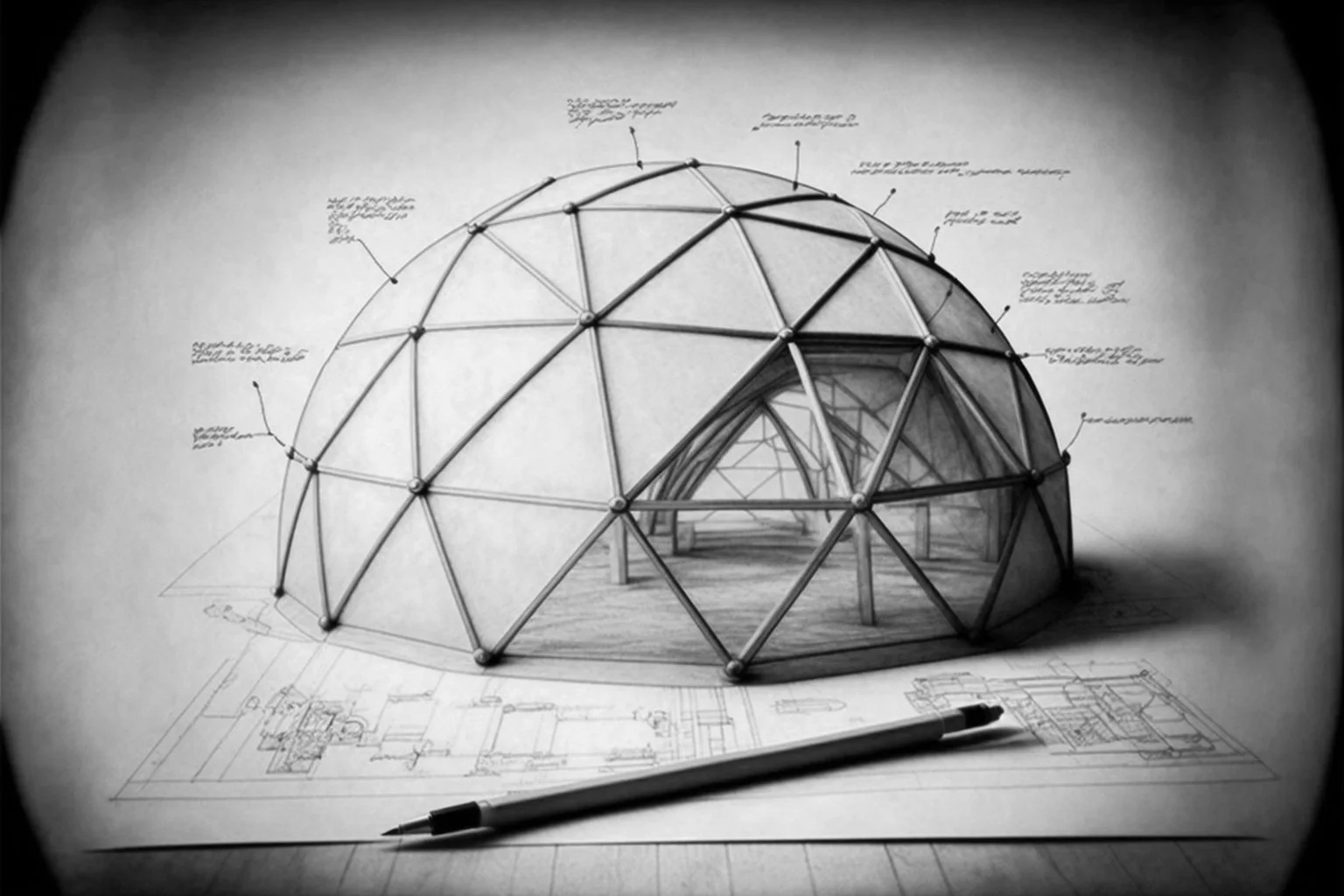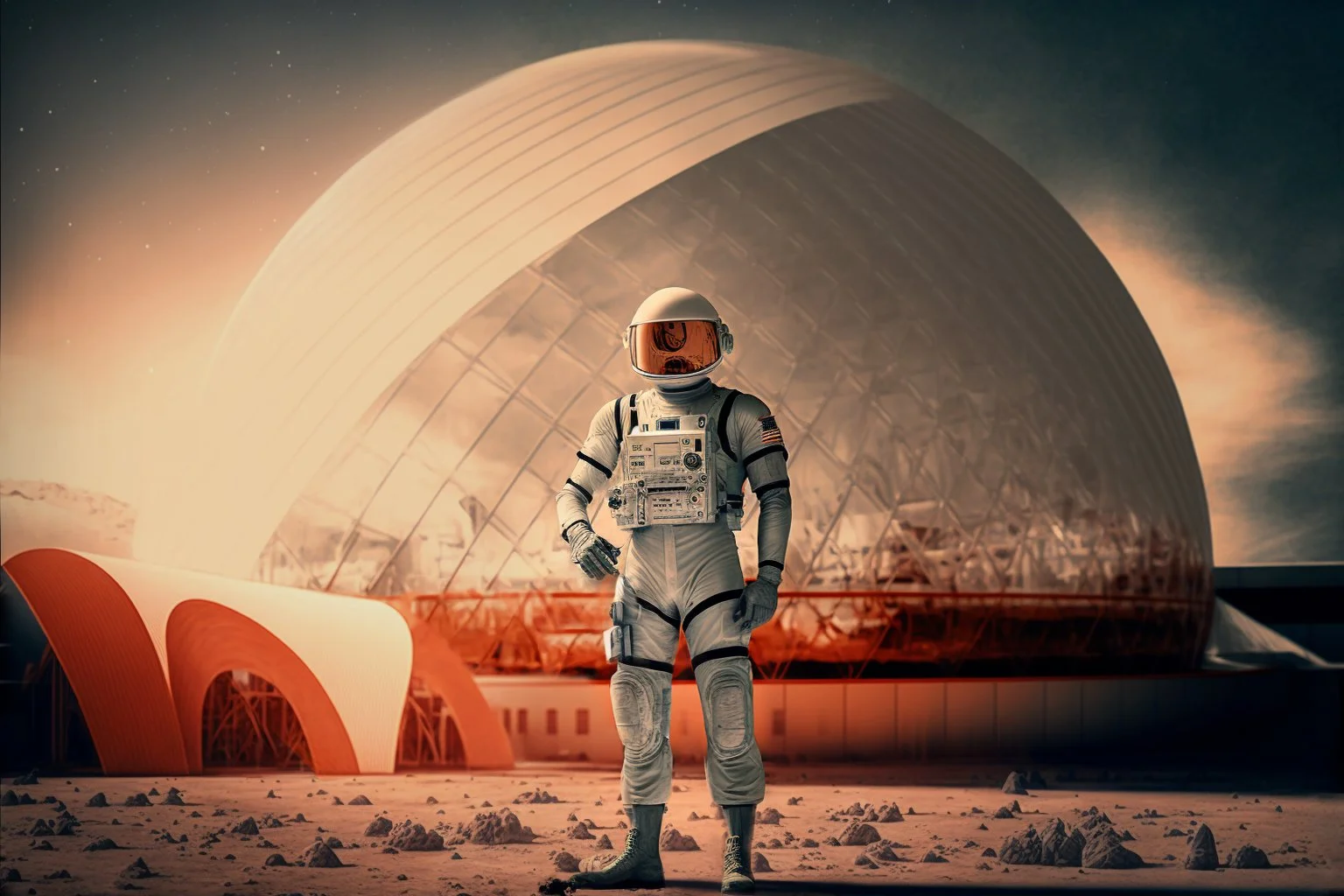Building on Mars: Why (Geodesic) Domes?
“Habitats on Mars will be built like human aquariums. Enclosures protecting and sustaining humans with everything that they need, as Mars watches in.”
How will we build structures that can withstand the harsh conditions on Mars? The answer can be found in geodesic domes.
Here are the reasons why geodesic domes will be the shape of structures built on Mars.
1. Geodesic domes are strong and stable
The unique structure of a geodesic dome, which consists of a series of interconnected triangles, makes it very strong.
Due to the low pressure on Mars, habitats will need to be pressurized. This means that gases such as oxygen are pumped inside, causing the structure to want to inflate and blow up like a balloon. Any tear or structural failure will result in rapid decompression, causing a possible explosion.
The strength of a geodesic dome comes from its ability to distribute loads evenly across its entire structure.
2. Geodesic domes are lightweight
The use of triangles in the construction of the dome means that it can be built with a relatively small amount of structural material, making it lightweight and easy to transport from Earth to Mars.
3. Geodesic domes are easy to assemble
The modular and repetitive nature of geodesic dome construction means that they can easily be assembled on site without the need for specialized equipment or training. This makes them well-suited for use in the remote and hostile environment of Mars, where the availability of labor is limited.
4. Geodesic domes are energy efficient
Less energy is required to circulate air, and the curved surface of the dome allows for good insulation, helping to keep the interior warm. This is particularly important on Mars, where extreme temperature fluctuations (from +20°C, 70°F at noon to -73°C, -100°F at night), make it difficult to maintain a comfortable living environment.
5. Geodesic domes are ideal greenhouses
The domes can be constructed using a variety of materials, including transparent materials such as plastic or glass, which allows for maximum sunlight exposure for plant growth. And each panel on the dome can be fitted with different materials, or motorized shades, to let sunlight in or block it out.
6. Geodesic domes have a large amount of internal space
The curved surface of a geodesic dome provides a large amount of interior space without the need for internal supports and columns.
Drawbacks
Here are some drawbacks to using geodesic domes.
1. Not an optimal use of space
The curved nature of the geodesic dome can create inefficient areas around the interior perimeter. If the roof comes straight down to meet the ground, the outer areas inside will be harder to access as the roofing is lower down. However, if a base wall is used to lift the roof up off the ground, it would make for more efficient use of space.
It is also more challenging to create efficient storage spaces around the rounded walls, and creating divisions and rooms within the curved dome is more complex.
2. Difficulty in building extensions
The fixed shape of a geodesic dome makes it difficult to add extensions. To maintain the strength of the structure, the curved design must be preserved. Expanding the base will require building additional domes and pressurized tunnels to connect them.
3. Limited size
Because the domes need to be pressurised, they cannot be larger than 50 – 100 meters, 164 – 328 feet, in diameter.
4. More coverage material
Even though a low amount of structural material is needed to construct the frame of the domes, more lightweight material is required to cover and enclose the dome because of its wide, rounded shape.
5. Anchoring it down
The domes require anchoring into the ground to counteract uplift forces, but this also provides additional stability during Marsquakes.
More on the Strength of Geodesic Domes
The Power of Triangles
It is the triangles that make up the frame of the dome that give it its strength.
Triangles are inherently strong. The shape of a triangle allows for the distribution of loads evenly across its sides, making it strong and resistant to external forces and deformations. This is especially important in the construction of a geodesic dome, which relies on the strength of its individual triangles to support the weight of the entire structure. This is why triangles are often used in the construction of bridges and other load-bearing structures.
Geodesic domes have a redundant structure. The use of a series of interconnected triangles means that if one triangle fails, the load will be redistributed to the other triangles, which can continue to support the structure. This redundant structure makes geodesic domes highly resistant to failure.
Geodesic domes have a natural tendency to return to their original shape. The use of a geodesic frame in the construction of a dome means that it has a natural tendency to return to its original shape when subjected to external forces. This makes geodesic domes highly stable and resistant to collapse.
In Space, Right Angles are Bad
A sphere is stronger than a box of the same size and material. This is because of the way stress is distributed in these two shapes.
Right angles are susceptible to stress.
The corners of a structure with right angles, such as a box, are subject to high levels of stress, which can weaken the structure over time. In a sphere the forces and stresses are evenly distributed across the surface of the structure. This is why circles and cylinders are often used in the building of tanks and other pressure vessels and also used in space construction.
Subscribe below to the ‘Building on Mars’ newsletter to stay connected.





